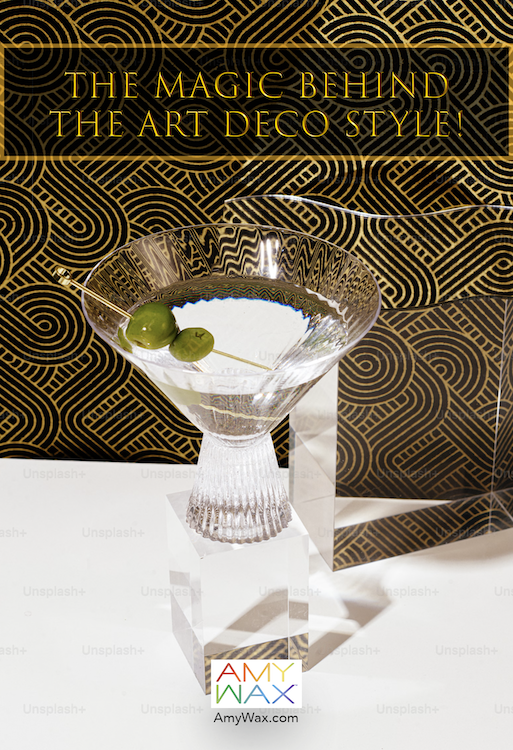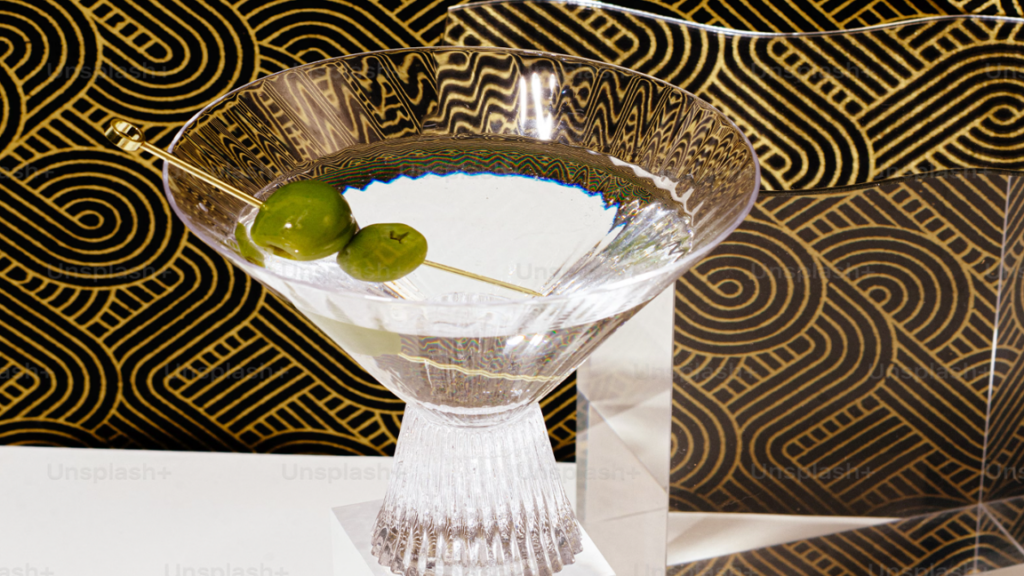
I don’t often delve into specific design styles or eras, but I get the desire to do so every so often. In recent years, I’ve seen the Art Deco style and Art Deco influence make its way into different residential and commercial spaces. I feel it’s an appropriate time to take a moment to appreciate/explore the Art Deco style and ultimately help you decide if the features from the design movement have a place in your home or business!
As a color expert and designer who thrives on marrying aesthetics with identity, I am continually inspired by the artistry and elegance of the Art Deco movement; it’s unlike anything else!
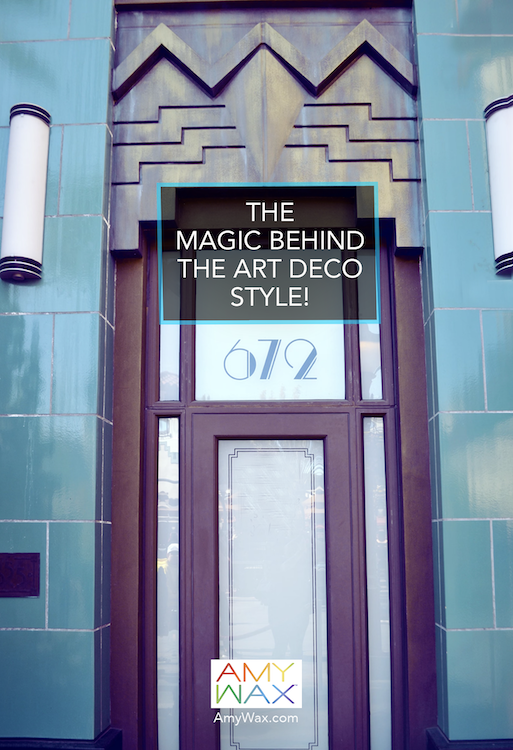
Starting in the 1920s and flourishing through the 1930s, Art Deco took root in response to the opulence and austerity of the World War I era and the previous generations of Victorian design. This movement was showcased in Paris at the 1925 International Exposition of Modern Decorative and Industrial Arts.
Defined by its streamlined forms, geometric patterns, and rich materials, Art Deco symbolized progress, luxury, and, above all, the early 20th century’s vision of modernity. Even if you didn’t know Art Deco by name, I guarantee you would recognize it by sight.
Globally, the style has its fingerprints on famous architectural landmarks such as New York’s Chrysler Building and Rockefeller Center, Miami’s vibrant South Beach district, and the beautiful skyline of Chicago, a city reborn in beautiful early 20th-century grandeur. It’s equally at home in grand cityscapes and intimate interiors. From the glamorous clubs and dark alleys of Gotham City to the glittering party scenes in The Great Gatsby, Art Deco has helped define/influence some of our most recognizable pop culture iconography.
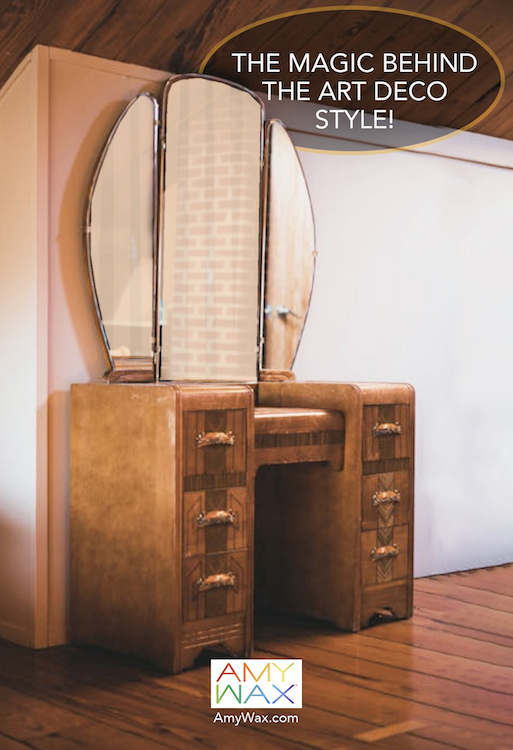
So, what makes Art Deco instantly recognizable? Its defining elements include geometric patterns like zigzags, chevrons, sunbursts, bold materials like chrome, glass, lacquered wood, inlaid metals, and a strong emphasis on symmetry, balance, and proportion.
Of course, as a color consultant, I must remark on the rich and beautiful color palettes of the Art Deco design era. Picture rich colors (including deep blacks) and jewel tones like emerald green, sapphire blue, and gold juxtaposed with metallics, streamlined shapes, curved edges, and sleek, aerodynamic forms that evoke progress and speed. It’s a design statement that implies true glamour and the height of elegance and style! I love it because it’s almost like looking at a moment in our past to see what they thought the progress of the future would resemble!
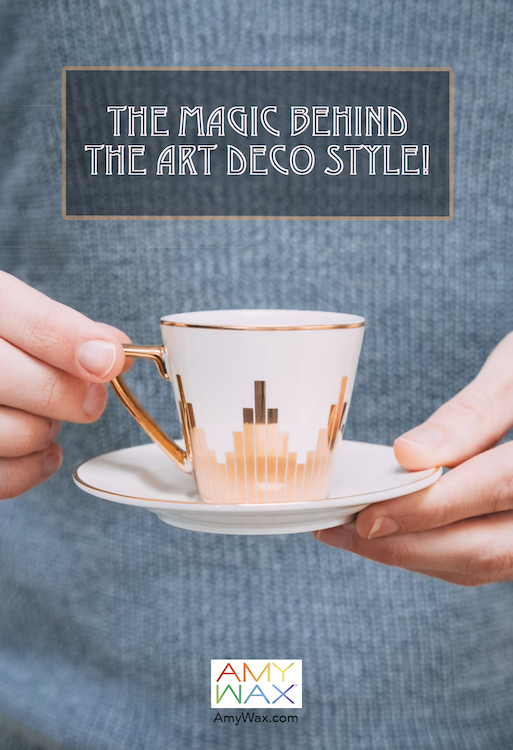
Here lies the big question: Is Art Deco right for your living space? The answer depends heavily on your aesthetic preferences and your home’s existing architecture. High ceilings, large windows, or existing architectural details like crown molding or a fireplace lend themselves beautifully to Art Deco accents.
Are you thinking of adding an Art Decor element to your home? Feel free to add dramatic lighting, decorative glassware, or even furniture into the room; whatever you add will be a conversation piece. Although some may disagree, I beg to differ. I believe that Art Deco can fit into a modern minimalist design if it is done with care. Art Deco has such a distinct expression that it can certainly stand out in a room. Its strong identity can make it the focal point of an understated space.
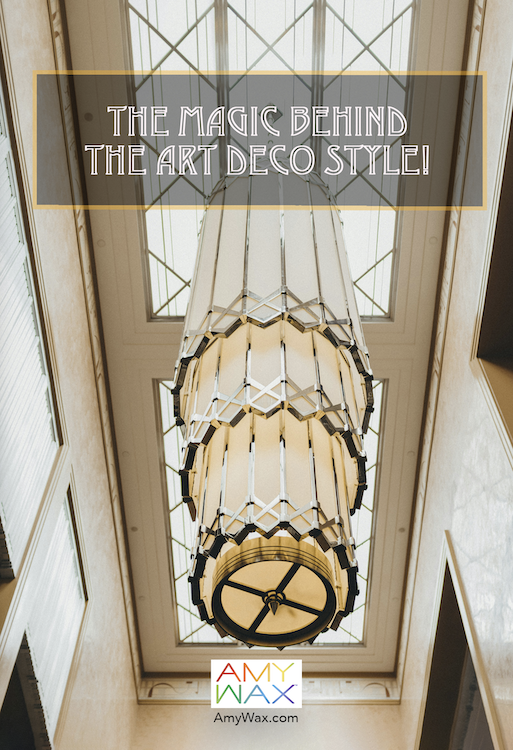
Be careful to choose your Art Deco piece carefully so the aesthetic of the new piece doesn’t compete with or overwhelm the design of your home.
To try the style, you can start small by incorporating metallic accents, geometric rugs, mirrored furniture, or bold lighting fixtures to introduce the features without overwhelming your space. Jewel tones paired with metallics can transform a room, so experiment with gold accents against black, velvety grays, saturated purples, or reds for a dramatic effect.
Wallpaper can also introduce the Art Deco vibe into your space. If you’re looking to paint an accent wall, perhaps you can wallpaper it with beautiful patterned paper in the Art Deco style to add that touch of elegance you’ve been looking for. Combining velvet upholstery with polished wood or chrome can echo the material richness and optimism of the 1920s!
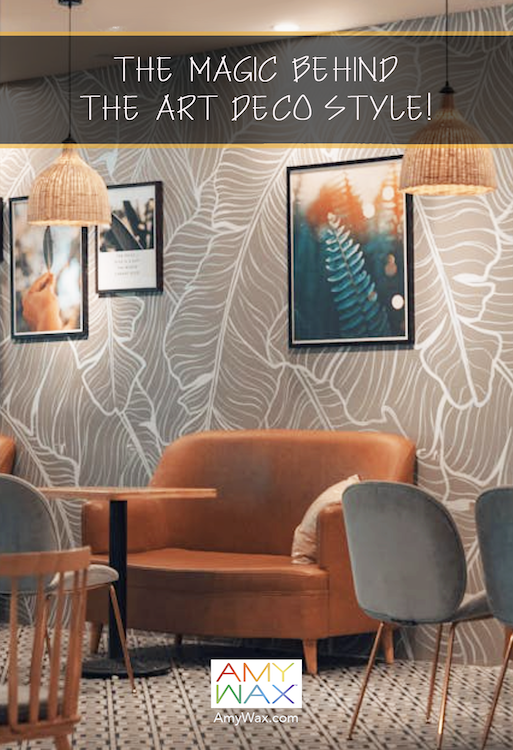
Art Deco’s inherent drama and striking look can also elevate commercial spaces if they are the right match. Here are some commercial spaces that I feel work beautifully with Art Deco.
Bars: Picture a cocktail lounge with sleek, mirrored surfaces, a black-and-gold palette, and a bold geometric bar. Deep, rich woods and metallic touches are the cherry on top for a place like this!
Retail Stores: Clothing boutiques can evoke sophistication with Art Deco shelving, elegant displays, and patterned floors; this works especially well in the heart of historic shopping districts in city centers.
Restaurants: A dining space with plush seating, ornate light fixtures, and rich hues can transport patrons to a bygone era—like a gorgeous speakeasy that Al Capone would have owned in the early 1930s!
Art Deco can be a perfect fit if your business strives for elegance and nostalgia. However, it’s essential to strike a balance, ensuring the design enhances rather than overwhelms the brand’s core message.
I’d love to hear about your encounters with Art Deco, whether it’s a favorite building, a stylish bar, or even a piece of jewelry. Let’s celebrate the enduring allure of this glamorous movement together!
